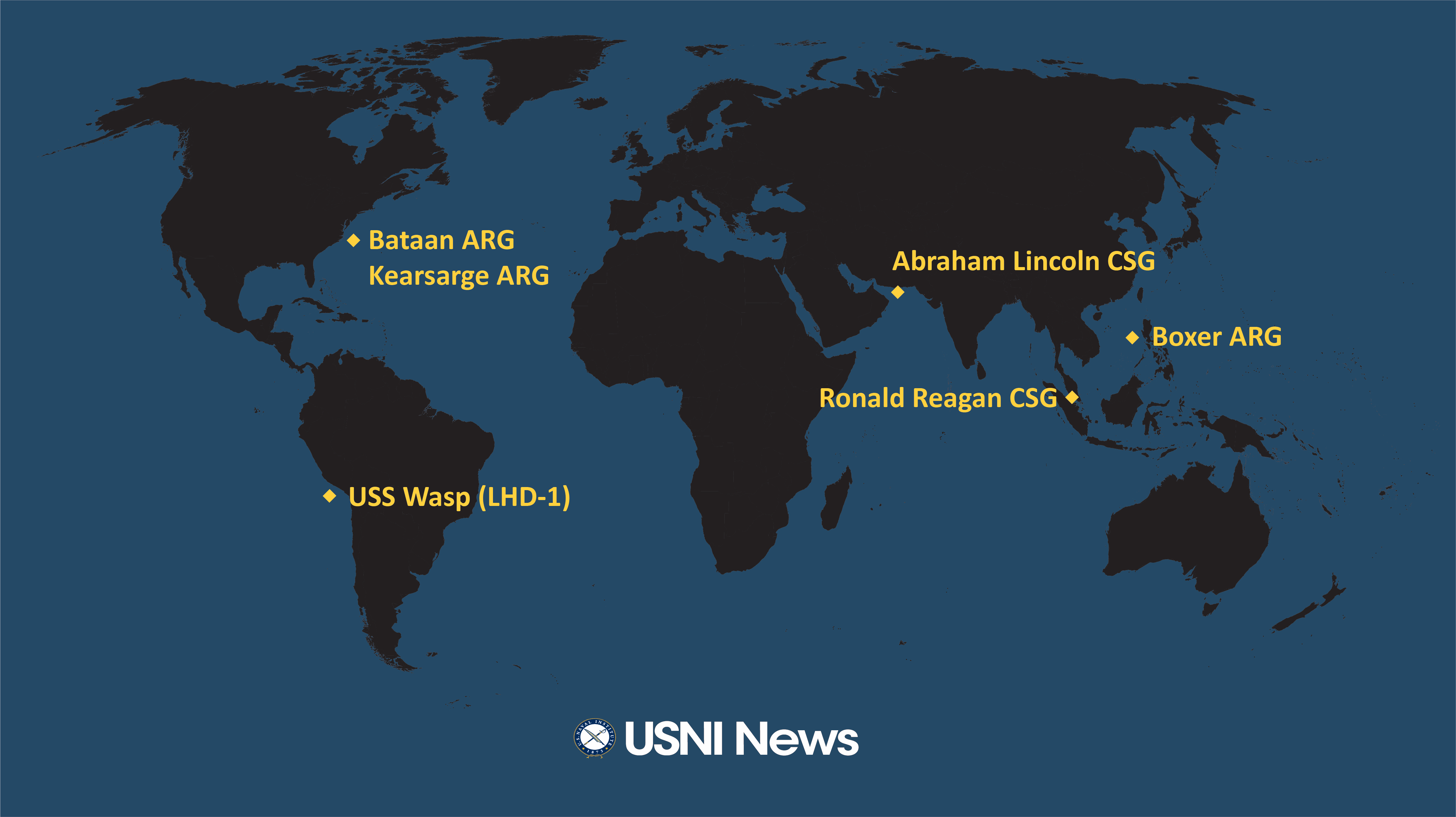
These are the approximate positions of the U.S. Navy’s deployed carrier strike groups and amphibious ready groups throughout the world as of Oct. 15, 2019, based on Navy and public data. In cases where a CSG or ARG is conducting disaggregated operations, the chart reflects the location of the capital ship.
Total U.S. Navy Battle Force:
290
Ships Underway
| Deployed Ships Underway | Non-deployed Ships Underway | Total Ships Underway |
| 50 | 24 | 74 |
Ships Deployed by Fleet
| Fleet Forces | 3rd Fleet | 4th Fleet | 5th Fleet | 6th Fleet | 7th Fleet | Total |
| 0 | 2 | 2 | 21 | 17 | 58 | 100 |
Near the Singapore Strait
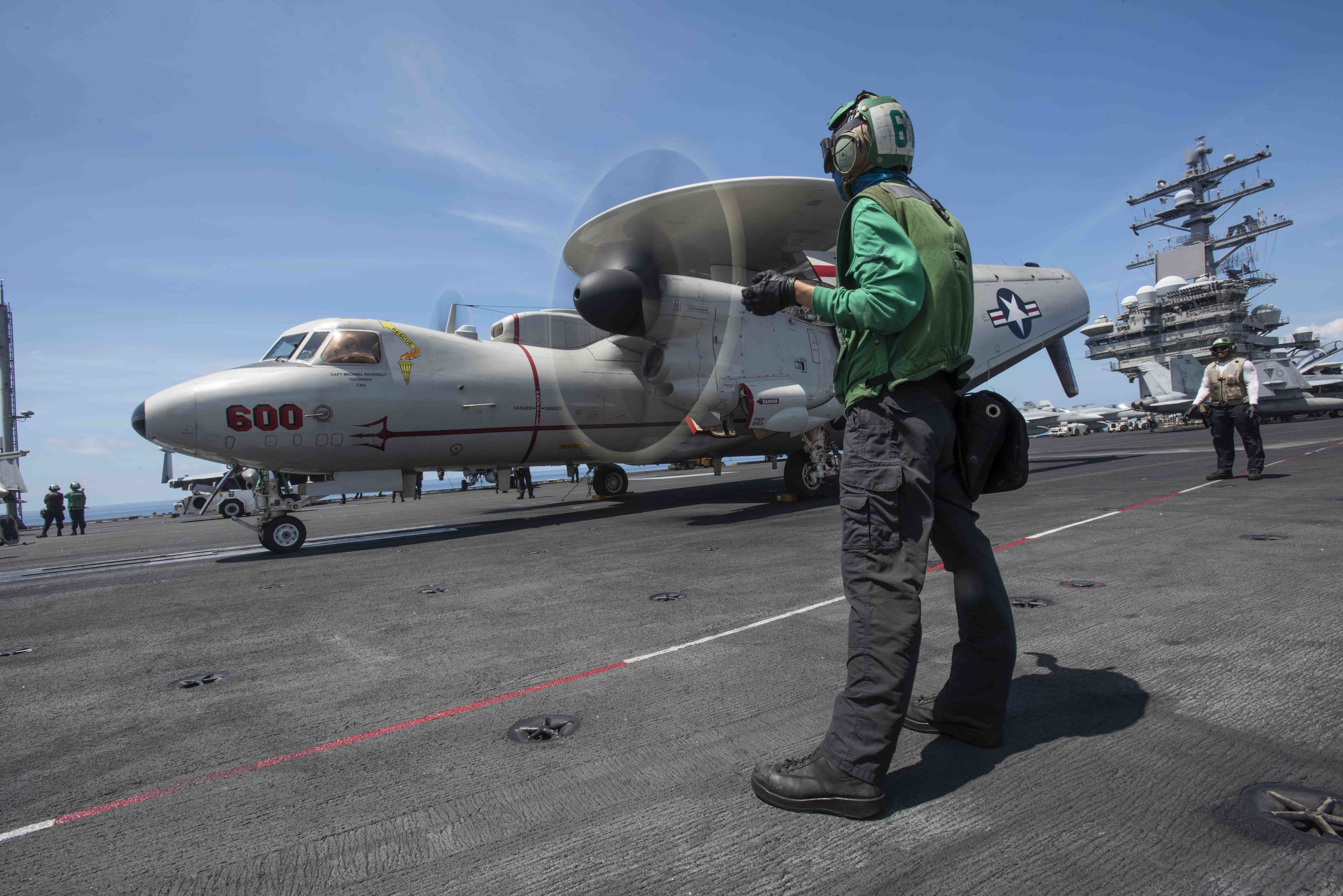
USS Ronald Reagan (CVN-76) and its carrier strike group (CSG) are underway near the Singapore Strait with Carrier Air Wing 5 embarked. The CSG also includes forward-deployed Ticonderoga-class guided-missile cruisers and Arleigh Burke-class guided-missile destroyers from Destroyer Squadron (DESRON) 15.
Carrier Air Wing 5
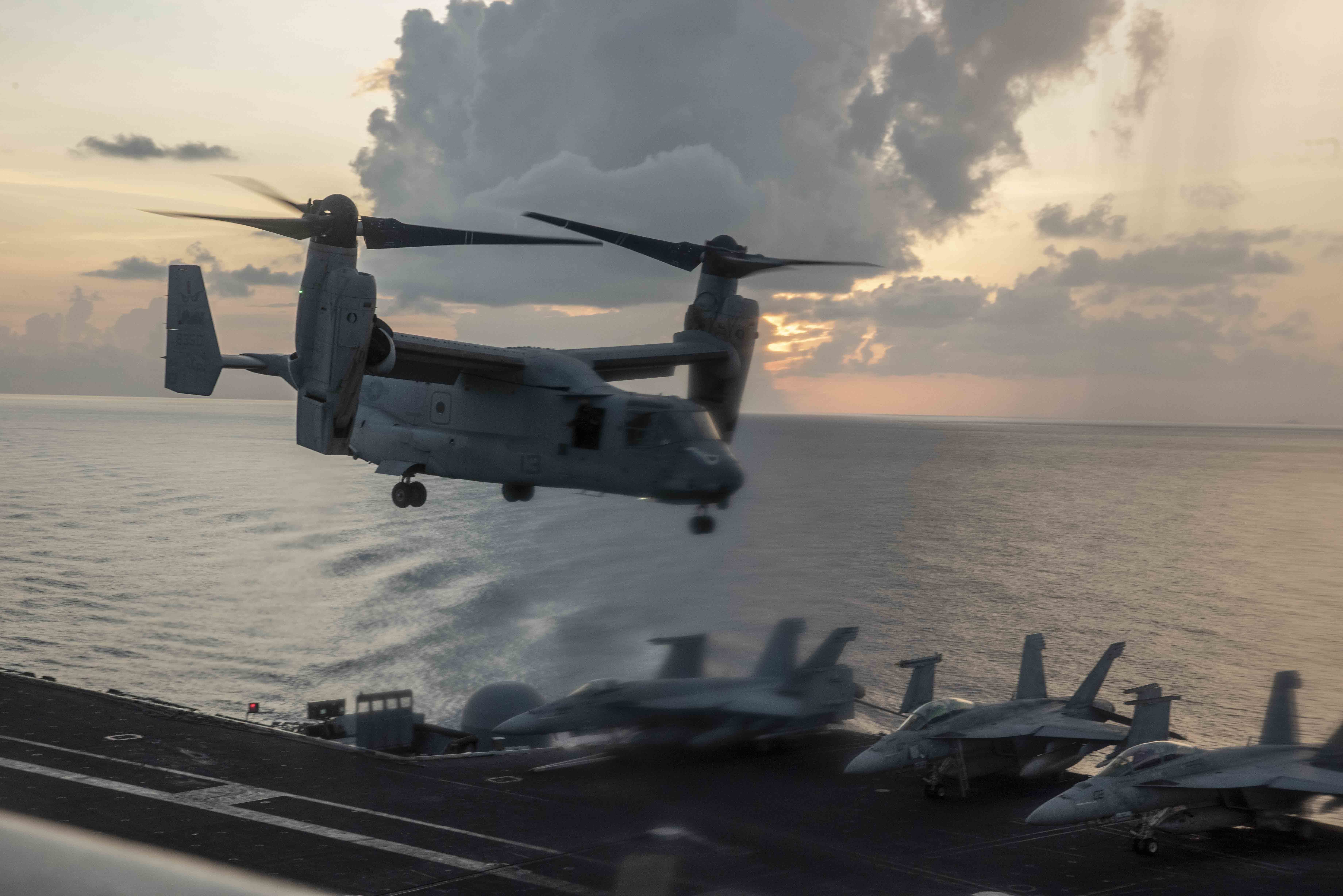
CVW 5, based at Naval Air Facility Atsugi and Marine Corps Air Station Iwakuni in Japan, is embarked aboard Ronald Reagan and includes a total of nine squadrons and detachments:
- The “Royal Maces” of Strike Fighter Squadron (VFA) 27 from Marine Corps Air Station Iwakuni
- The “Diamondbacks” of VFA-102 from Marine Corps Air Station Iwakuni
- The “Eagles” of VFA-115 from Marine Corps Air Station Iwakuni
- The “Dambusters” of VFA-195 from Marine Corps Air Station Iwakuni
- The “Shadowhawks” of Electronic Attack Squadron (VAQ) 141 Marine Corps Air Station Iwakuni
- The “Tigertails” of Carrier Airborne Early Warning Squadron (VAW) 125 from Marine Corps Air Station Iwakuni
- The “Providers” of Fleet Logistics Support Squadron (VRC) 30 Det 5 from Marine Corps Air Station Iwakuni
- The “Golden Falcons” of Helicopter Sea Combat Squadron (HSC) 5 from Naval Station Atsugi, Japan
- The “Saberhawks” of Helicopter Maritime Strike Squadron (HSM) 77 from Naval Air Station Atsugi
In the South China Sea
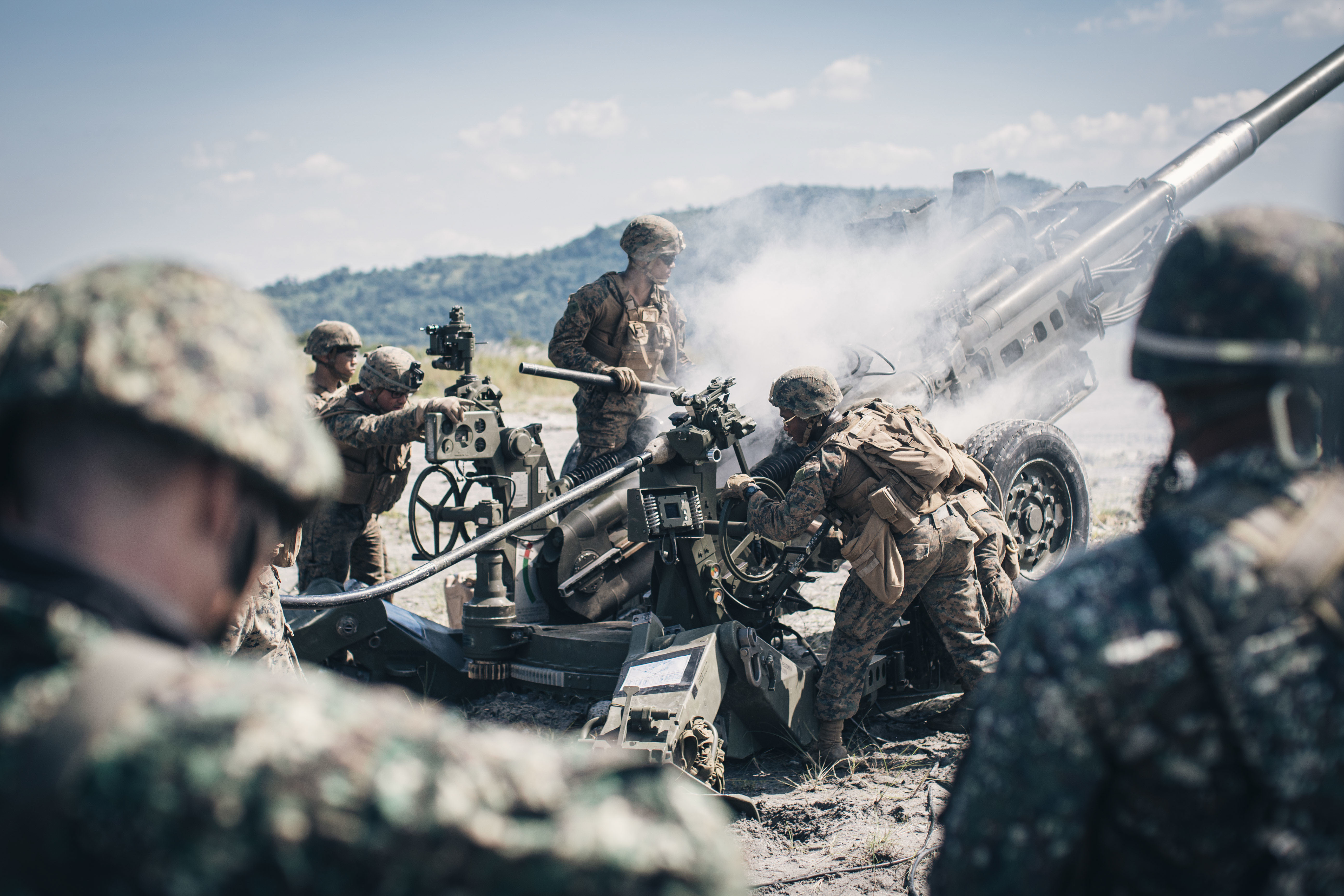
The Boxer Amphibious Ready Group (ARG) with 11th Marine Expeditionary Unit (MEU) is in the South China Sea.
U.S. Marines are sharpening their amphibious skills alongside amphibious assault vehicle crews of Philippine Marines and Japanese sea soldiers in a series of exercises that aim to tighten cooperation between the three nations.
The Philippine-led exercise, known as KAMANDAG, runs Oct. 9 to 18 with about 2,000 troops training at locations in Luzon and Palawan. Kamandag is an acronym for the Filipino phrase “Kaagapay Ng Mga Manirigma Ng Dagat,” meaning “Cooperation of the Warriors of the Sea.”
This year marks the third iteration of the U.S.-Philippines bilateral exercise and the second that also includes Japan, which continues to build capabilities in its self-defense forces that include the Amphibious Rapid Deployment Brigade. The exercise will feature 1,400 U.S. forces and 100 members of the Japan Self-Defense Force.
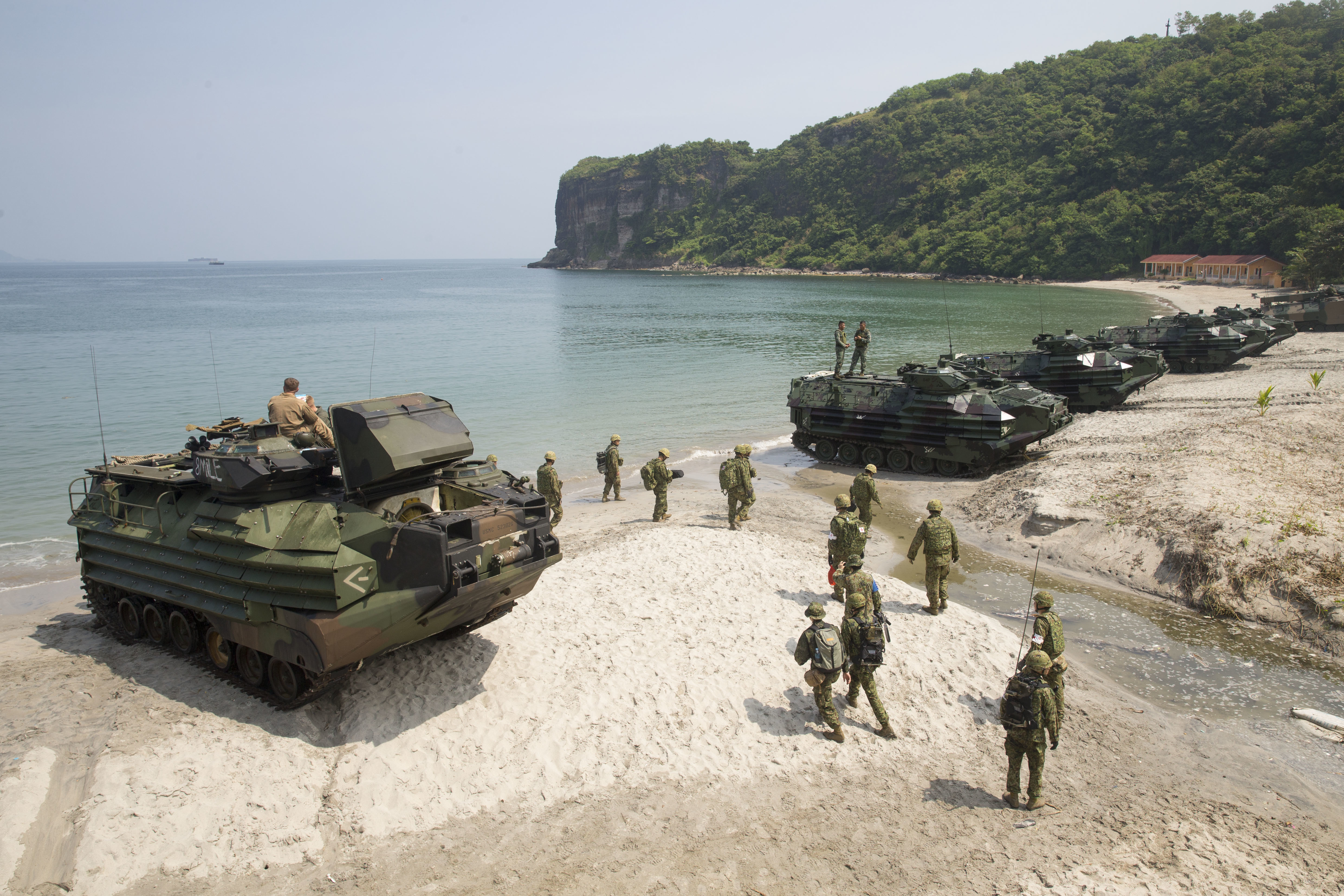
Amphibious Squadron (PHIBRON) 5 is the ARG Commander. In addition to the USS Boxer (LHD-4), the ARG also includes dock landing ship USS Harpers Ferry (LSD-49) and amphibious transport dock USS John P. Murtha (LPD-26). The ARG includes the “Blackjacks” of Helicopter Sea Combat Squadron 21, Assault Craft Unit 5, Naval Beach Group 1, Beachmaster Unit 1, Fleet Surgical Team 5, and Tactical Air Control Squadron 11.
The Camp Pendleton-based 11th MEU is comprised of Battalion Landing Team 3rd Battalion, 5th Marines; Marine Attack Squadron 214 equipped with the AV-8B Harrier; Marine Medium Tiltrotor Squadron 163 (Reinforced); and Combat Logistics Battalion 11.
In the North Arabian Sea
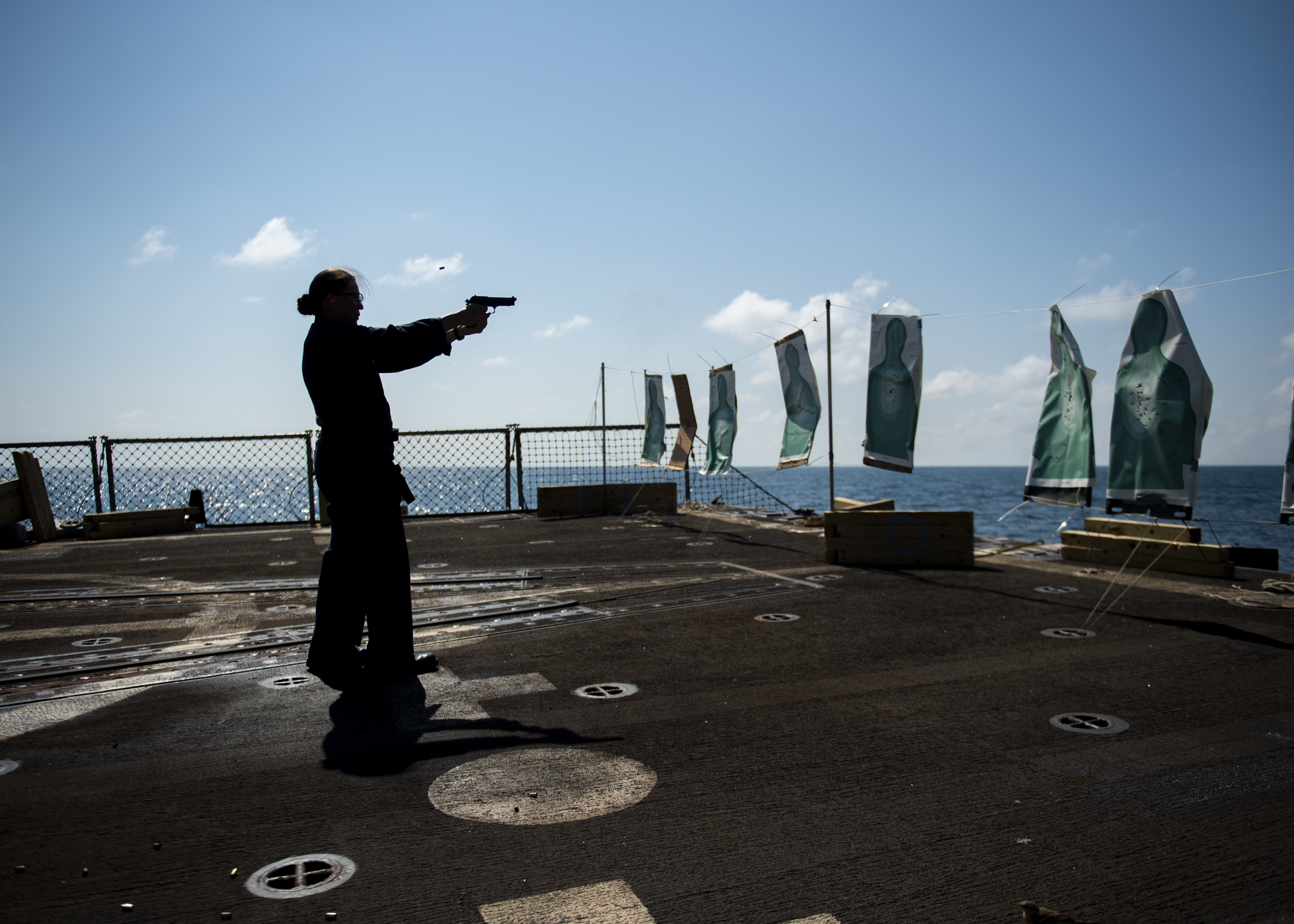
The Abraham Lincoln Carrier Strike Group is in the North Arabian Sea.
Carrier Strike Group 12
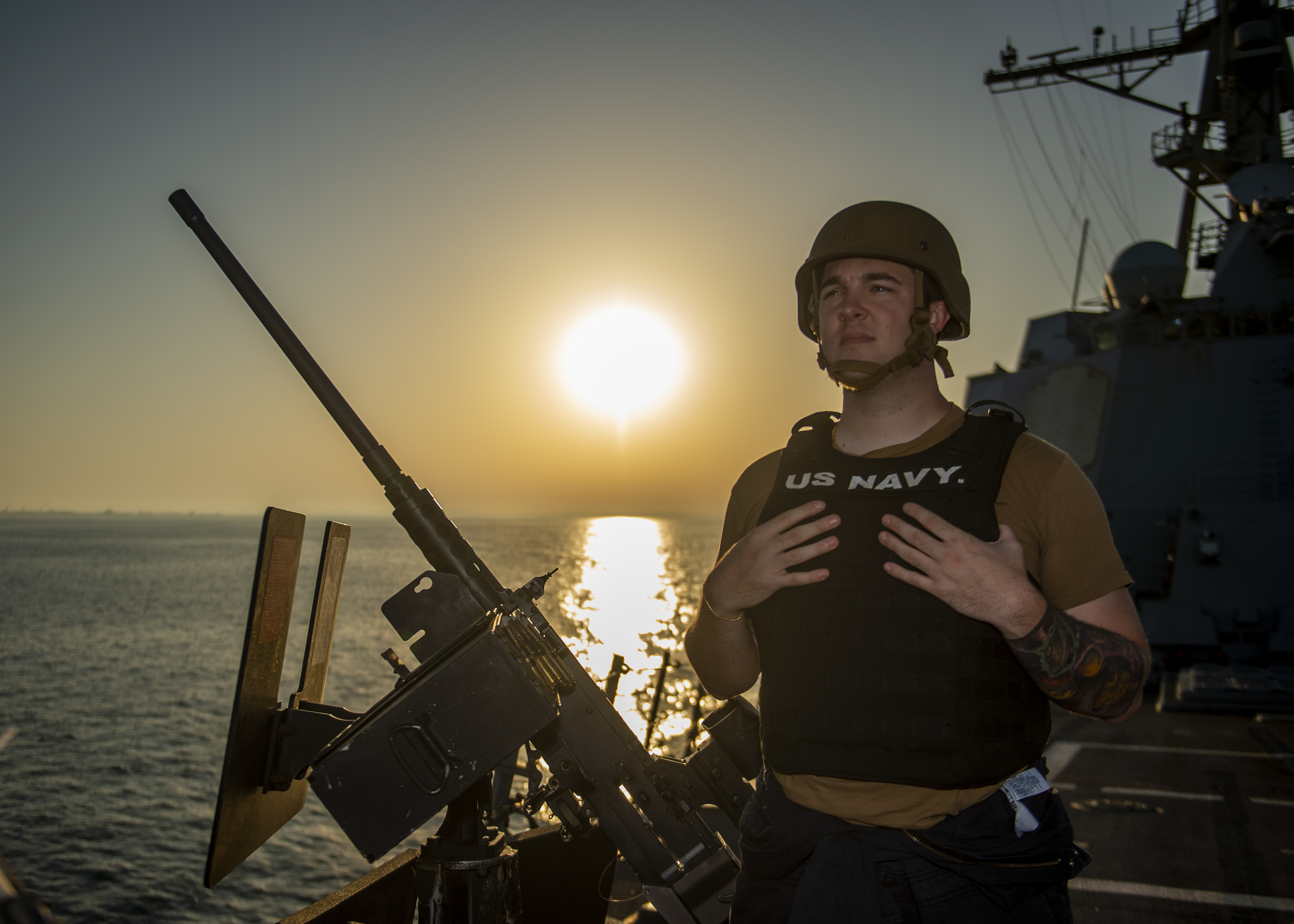
Aircraft carrier
USS Abraham Lincoln (CVN-72), homeported in Norfolk, Va. (shifting to San Diego, Calif., upon completion of deployment)
Carrier Air Wing 7
CVW 7, based at Naval Air Station Oceana, Va., is embarked aboard Lincoln and includes a total of nine squadrons and detachments:
- The “Fist of the Fleet” of Strike Fighter Squadron (VFA) 25 from Naval Air Station Lemoore, Calif.
- The “Sidewinders” of VFA-86 from Naval Air Station Lemoore, Calif.
- The “Jolly Rogers” of VFA-103 from Naval Air Station Oceana, Va.
- The “Pukin’ Dogs” of VFA-143 from Naval Air Station Oceana, Va.
- The “Patriots” of Electronic Attack Squadron (VAQ) 140 from Naval Air Station Whidbey Island, Wash.
- The “Bluetails” of Carrier Airborne Early Warning Squadron (VAW) 121 from Naval Station Norfolk, Va.
- The “Rawhides” of Fleet Logistics Support Squadron (VRC) 40 from Naval Station Norfolk, Va.
- The “Night Dippers” of Helicopter Sea Combat Squadron (HSC) 5 from Naval Station Norfolk, Va.
- The “Griffins” of Helicopter Maritime Strike Squadron (HSM) 79 from Naval Air Station North Island, Calif.
Destroyer Squadron 2

The leadership of DESRON 2 is embarked aboard Lincoln and commands the guided-missile destroyers that are operating as part of the CSG.
USS Bainbridge (DDG-96), homeported in Norfolk, Va.
USS Mason (DDG-87), homeported in Norfolk, Va.
USS Nitze (DDG-94), homeported in Norfolk, Va.
Guided-missile Cruiser
USS Leyte Gulf (CG-55), homeported in Norfolk, Va.
In the Eastern Pacific
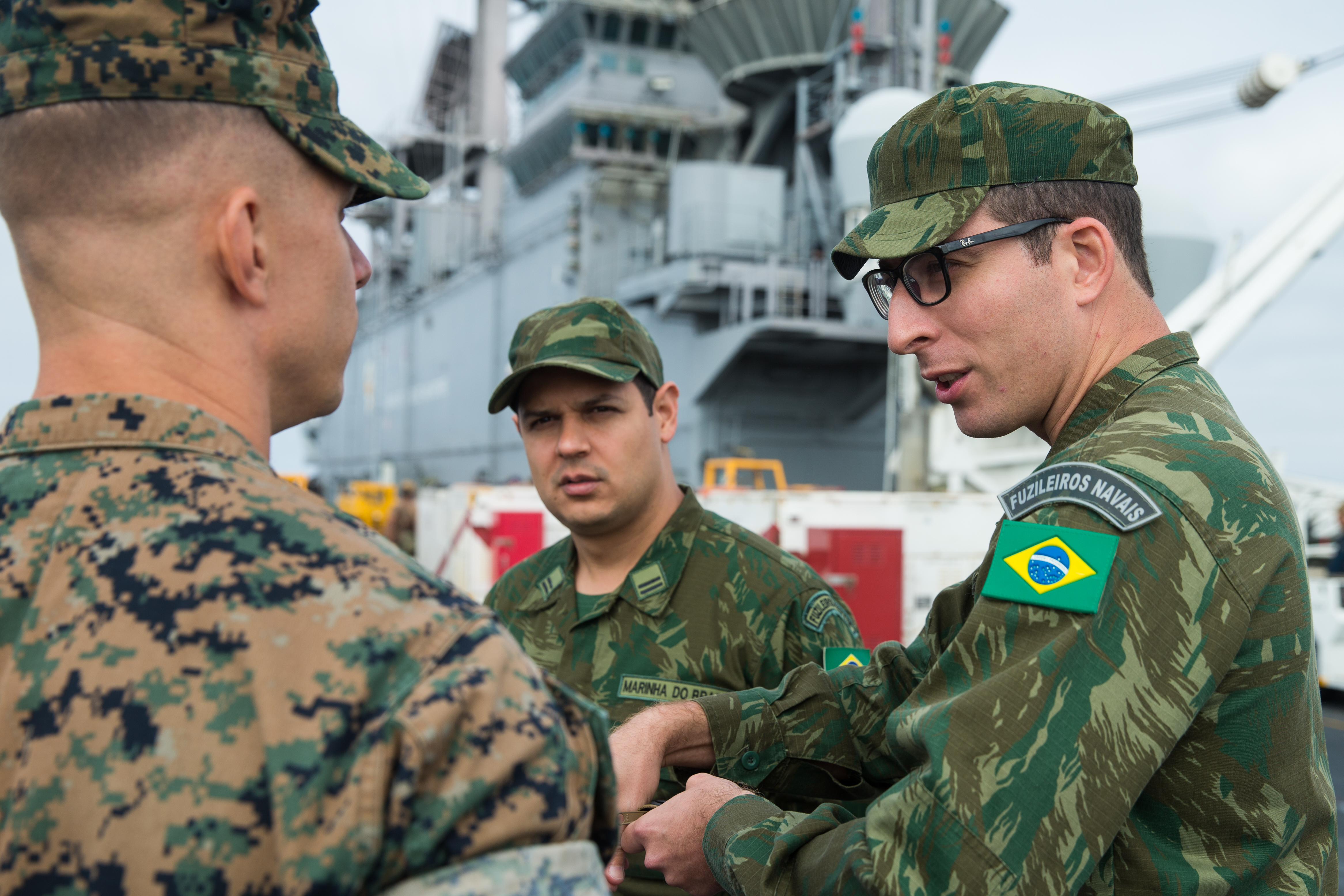
USS Wasp (LHD-1) is underway in Eastern Pacific – headed around the horn – transiting from Japan to a new homeport in Norfolk. Wasp is scheduled to visit Valparaiso, Chile, and Rio De Janeiro, Brazil.
Embarking aboard the Wasp in Valparaiso will be a Combined Task Force (CTF) comprising approximately twenty personnel from the U.S., Argentina, Brazil, Chile, and Peru. The CTF will focus on mission analysis and planning for a humanitarian assistance and disaster relief exercise scenario. Training alongside our partner nations demonstrates the commitment to stability in the region.
In the Western Atlantic
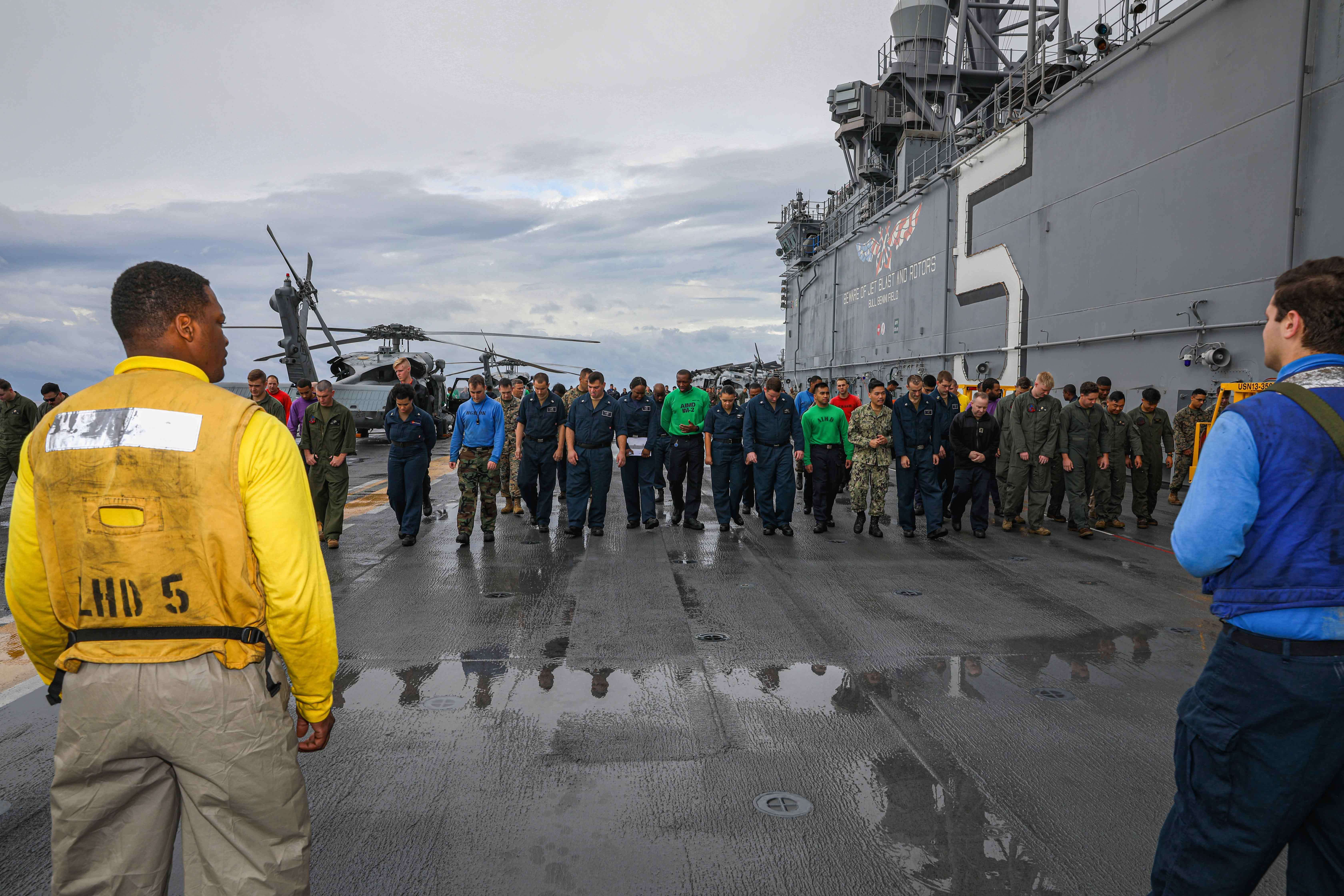
The Bataan ARG is underway in the Virginia Capes with the 26th MEU embarked. They are conducting a composite training unit exercise (COMPTUEX) – a key pre-deployment training milestone.
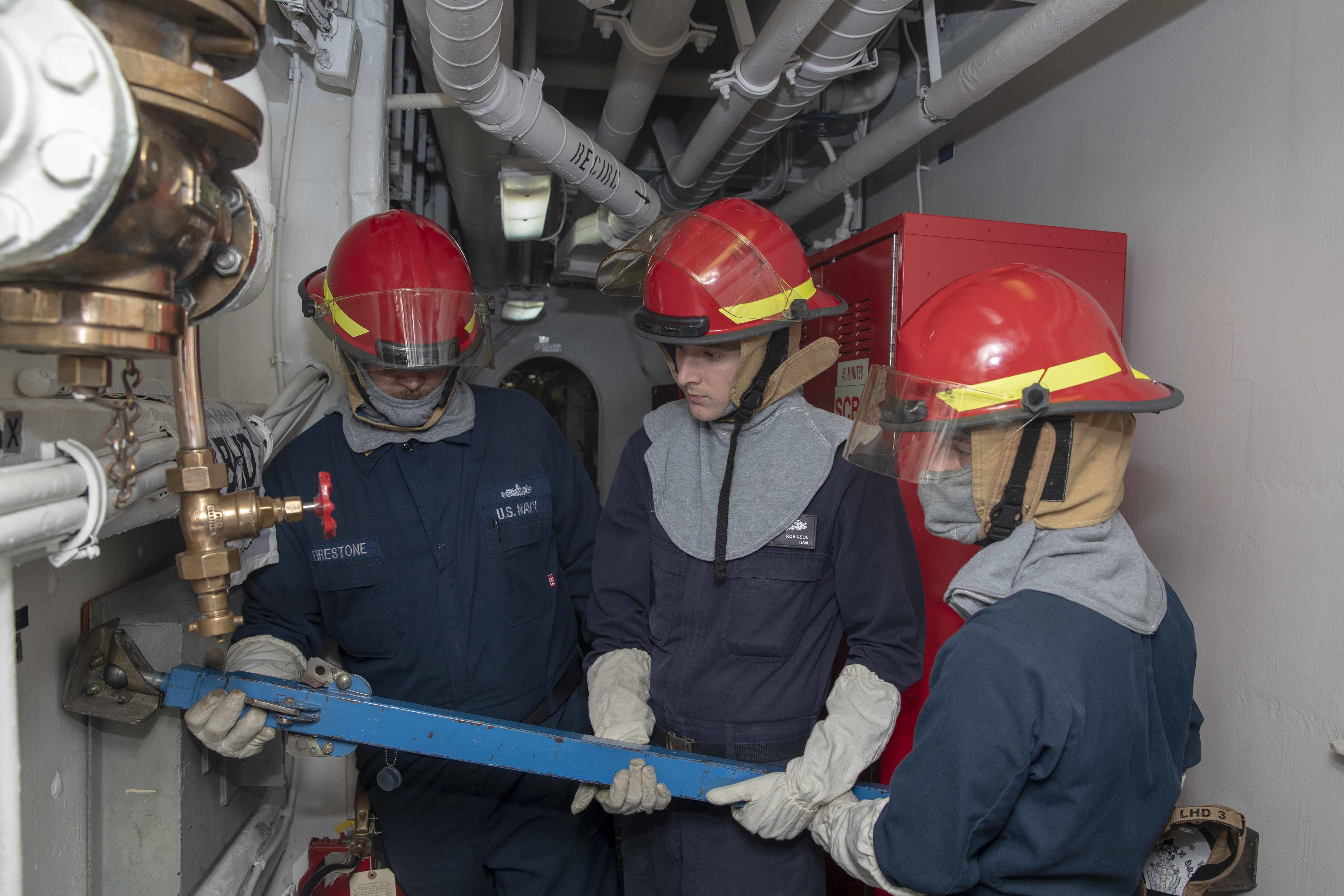
USS Kearsarge (LHD-3) is also underway in the Virginia Capes. Kearsarge is undergoing a post-deployment readiness evaluation to ensure the ship has a functional training team established and is familiar with the training standards prior to its next deployment.
In addition to these major formations, not shown are thousands of others serving in submarines, individual surface ships, aircraft squadrons, SEALs, Special Purpose Marine Air-Ground Task Forces, Seabees, Coast Guard cutters, EOD Mobile Units, and more serving throughout the globe.





